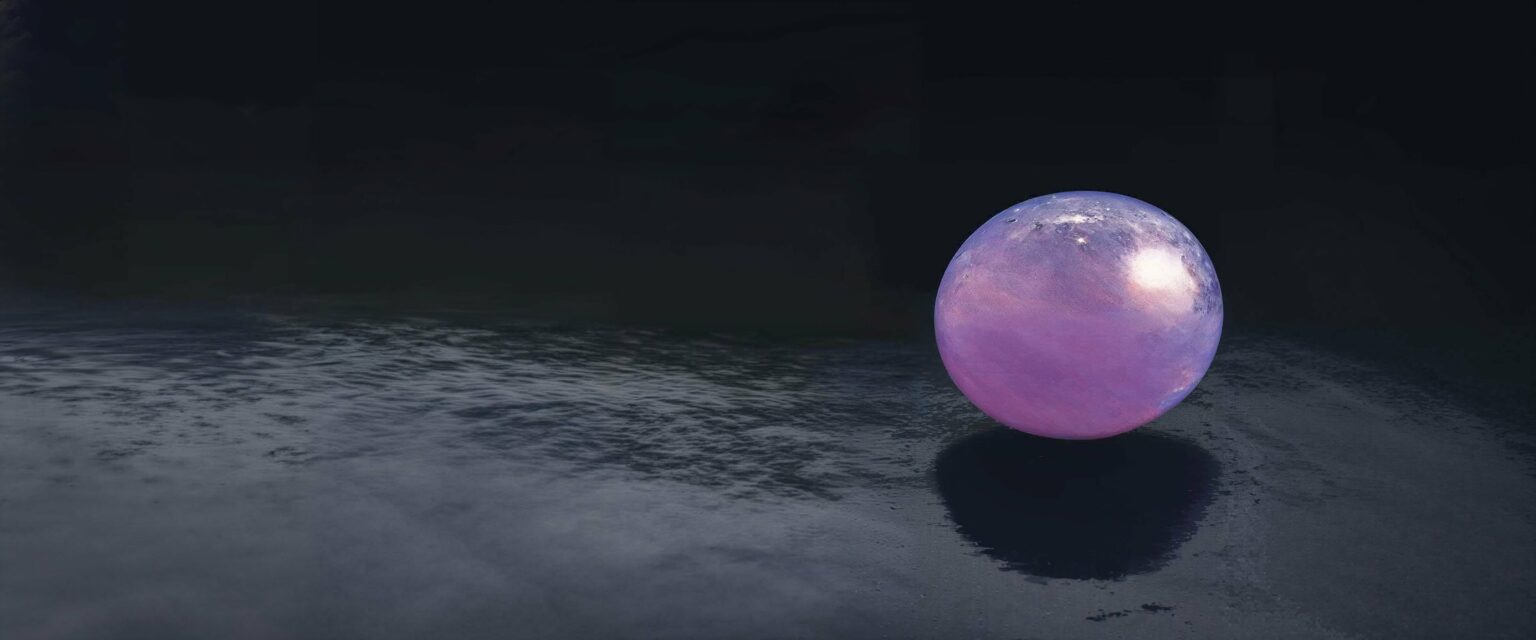Pity lavender jade, that pink-to-purple member of jadeite’s rather extensive color family. Far rarer than this gem’s much-coveted green and white varieties, lavender jade in any but its very few ne-plus-ultra specimens is still denied the veneration and value of its sister shades by jade’s chief patrons—the Chinese, Japanese and British.
Indeed, the only people with whom lavender jade has found wide favor are Americans, mostly since World War II. This has robbed many superb examples of this gem of an important sales ingredient—provenance, the documented history of any crafted object. “In auction catalogs, you are used to seeing green and white jadeites with high provenance such as ownership by royalty,” says Daphne Lange Rosenzweig, adjunct associate professor of Oriental art at the University of South Florida in Tampa. “But with lavender jade the provenance is usually far less, often a note that reads ‘From the collection of a Palm Beach lady.'”
The rub of belated and mostly backhanded recognition is aggravated by the painful fact that green and white jadeites have enjoyed the stature of being the most prized cabochon and craft stones since their introduction to China from neighboring Burma around 1750. Until then, nephrite (a tremolite-actinolite mineral different from jadeite, a pyroxene) had been the chief mainstay of Chinese artisanship and statuary for 3,000 to 7,000 years, according to various educated guesses. For an interloper such as jadeite to win, in a matter of decades, regard equal to that accorded nephrite from China’s fastidious jade lovers was the supreme tribute to this latecomer’s greens and whites.
It was also the supreme snub to jadeite’s pinks and purples.
But continuing neglect in Asian connoisseur circles is only one of lavender jade’s problems.
After finally earning respect in America, lavender jade now faces a long-brewing crisis of confidence—due to often undetectable dyeing by Hong Kong dealers.
Worthies of the Name
The term “jade” is one of the gem world’s most confusing, applied in the past to diverse carving stones including serpentine and soapstone. (For more on ancient versions of “jade” meanings of jadeite, see Paul Desautels’ discussion-muddied in his fascinating 1986 book, “The Jade Kingdom.”) While gemology has narrowed the number of minerals worthy (in Western eyes) of what Desautels calls “the noble name of jade” to two—nephrite and jadeite—nephrite has first claim on it in terms of seniority. But jadeite has won equal—some would say top—billing alongside jadeite in terms of value. “Today’s fine jewelry market uses jadeite almost exclusively,” notes Beverly Hills jade dealer, Don Kay, Mason-Kay Inc. Nephrite is generally valued for its antiquity and carving excellence, rather than its intrinsic value.
Jadeite, on the other hand, has so much more intrinsic than extrinsic value that dealers now feel it worthless to preserve in artifact form. As a result, masterpieces are seen as little more than rough from which to extract cabochons. “In recent years, so much jadeite has come on the Hong Kong market that Christie’s and Sotheby’s have been holding special jade sales there,” says Rosenzweig. “You can imagine how upset museum curators feel when they see Hong Kong dealers at auction viewings measuring magnificent jadeite incense burners and statues for the amount of retrievable fine-color material in them.”
By “fine color,” Rosenzweig means, of course, the high-translucent emerald-green for which jadeite is famous. Nephrite’s most common hue—a dull, waxy green—never gave it competition. Indeed, the color variety of nephrite most prized by the Chinese was a faint almond-white called “mutton-fat” from Turkestan that was no longer found when Burma’s jade appeared. Fortunately, Burma provided a delicate bone-white color that has become the second most revered of jadeite’s many hues in the Orient. Yet, except for the very finest pieces, its pinks and purples failed to find general acceptance. Perhaps it was their novelty. After all, pinks were practically unknown in nephrite.
Whatever the reason, there has never been a tradition of lavender jade connoisseurship in Asia. What connoisseurship there is has been confined almost solely to America where firms like Gump’s in San Francisco have long been marketers of it. However, as soon as lavender jade began to catch on here, rumor had it that a good many of the stones being exported from Hong Kong, the world’s leading jade-cutting center, had been dyed. No one knows how much of the lavender jade sold to Americans during the past 40 years has been dyed, but it is safe to assume the majority.
Pinky Alerts
Evidently, dyeing has been a problem with lavender jade as long as there has been significant demand for it. In his 1962 book, “Jade: Stone of Heaven,” retailer Richard Gump revealed, “During 1957, more than 25,000 pieces of dyed jade are known to have been imported into the United States. To keep with Federal Trade Commission (FTC) regulations, importers made sure it was labeled ‘dyed jade’ when it passed through Customs. But some dealers were not so explicit when the jade was sold to customers.” Since 1957 was the year that the FTC first issued its jewelry industry Trade Practice Rules (now called Guides), this probably was not the first time dyed lavender jade had been imported here—merely the first time this by-then-standard procedure had been disclosed.
Even without disclosure, the sheer quantity of lavender jade on the market would have tipped off traders to the likelihood of adulteration. Lavender jade is one of the rarest of all jadeite colors.
In time, the extent of dyeing so alarmed the Gemological Institute of America that it made foolproof detection of the process a top research priority. Given the profusion of organic dyes (one of the most popular of which is said to be blueberry juice) used to turn abundant off-white pieces of jadeite lavender, the school has been frustrated in its search for a simple dye-identification test it can teach its thousands of graduates.
Even so, jewelers shouldn’t rule out stocking lavender jade because they believe it is all dyed in an undetectable manner. Very often, dyeing gives itself away under a microscope via the accumulation of dye in stone fissures and cracks. But since alot of dyeing is not telltale, experts like Rosenzweig insist, “Lavender jade must be bought from impeccable sources.”
Please note: this profile was originally published in 1992 in Modern Jeweler’s ‘Gem Profiles/2: The Second 60’, written by David Federman with photographs by Tino Hammid.
The 9.75-carat lavender jadeite shown in the header image is courtesy of Mason-Kay Inc., Beverly Hills, Calif.




